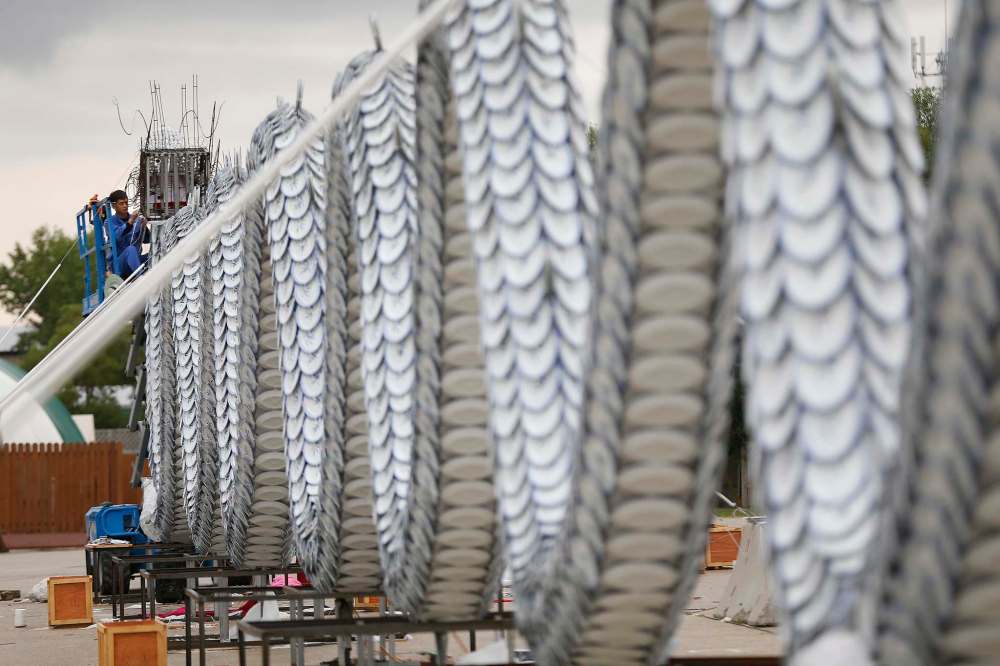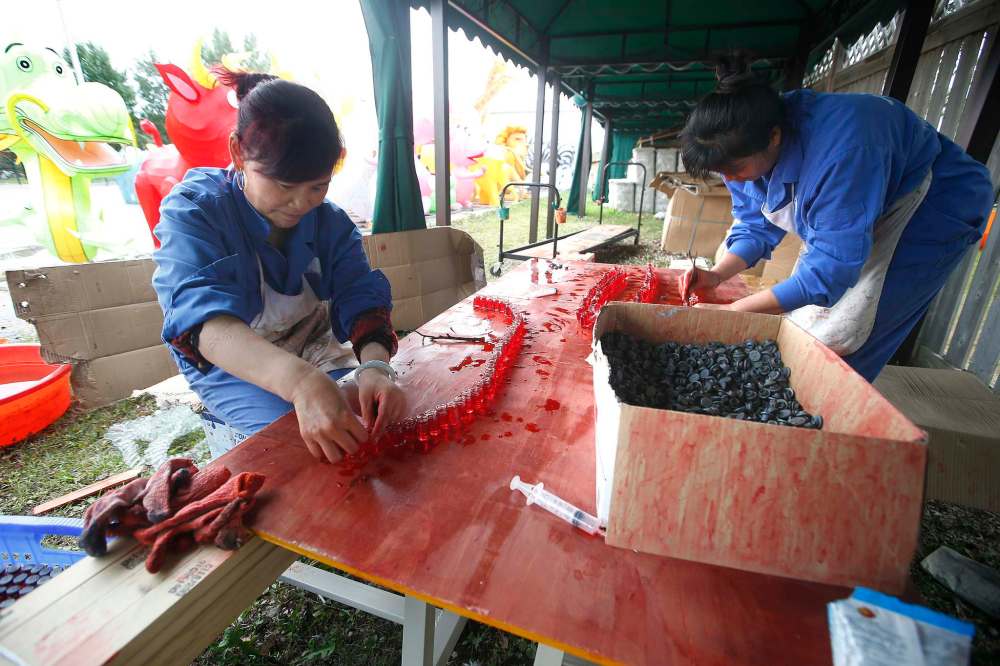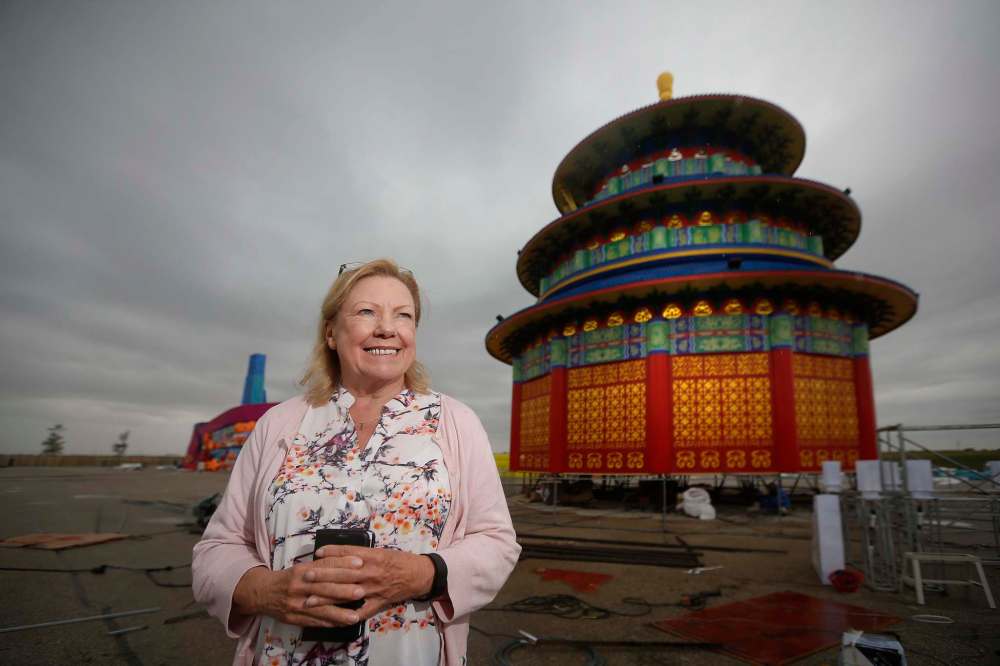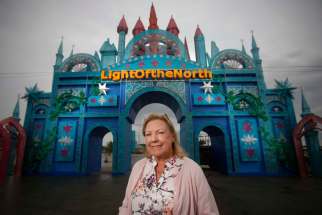Winnipeg’s Chinese sister city bringing Northern Lights of a different sort
Read this article for free:
or
Already have an account? Log in here »
To continue reading, please subscribe:
Monthly Digital Subscription
$0 for the first 4 weeks*
- Enjoy unlimited reading on winnipegfreepress.com
- Read the E-Edition, our digital replica newspaper
- Access News Break, our award-winning app
- Play interactive puzzles
*No charge for 4 weeks then price increases to the regular rate of $19.00 plus GST every four weeks. Offer available to new and qualified returning subscribers only. Cancel any time.
Monthly Digital Subscription
$4.75/week*
- Enjoy unlimited reading on winnipegfreepress.com
- Read the E-Edition, our digital replica newspaper
- Access News Break, our award-winning app
- Play interactive puzzles
*Billed as $19 plus GST every four weeks. Cancel any time.
To continue reading, please subscribe:
Add Free Press access to your Brandon Sun subscription for only an additional
$1 for the first 4 weeks*
*Your next subscription payment will increase by $1.00 and you will be charged $16.99 plus GST for four weeks. After four weeks, your payment will increase to $23.99 plus GST every four weeks.
Read unlimited articles for free today:
or
Already have an account? Log in here »
Hey there, time traveller!
This article was published 14/08/2018 (2678 days ago), so information in it may no longer be current.
After three decades, giant pandas are returning to Winnipeg from its sister city Chengdu, China. Only this time, instead of fur, the animals are covered in light bulbs.
A dozen fiberglass panda cubs are among the Chinese cultural installations that will light up 10 acres at Red River Exhibition Park at the end of the month to mark 30 years since the twinning of Winnipeg and Chengdu, a city of 15 million in the southwest Sichuan province.
The Lights of the North exhibit — the largest show of its kind ever mounted in Canada — will be on display to showcase Chengdu culture from Aug. 31 to Oct. 14.

The total light bulb count for the event is about one million, said Dorothy Dobbie, co-chair of the event’s organizing committee.
“Just think about the power that comes into this site to run the big rides for the Ex and so on; we’re going to be stretching that to the limit, which they don’t usually do — and we’re using LED lights,” she said.
The festival’s $4-million price tag is being covered by local private investors, Dobbie said.
Fifty people flew to Winnipeg from Chengdu to install the structures — with materials packed into 20 shipping containers — on the fairgrounds at the beginning of the month. They’ve been slowly erecting colourful pandas, a Chinese temple and a replica of the Canadian Museum for Human Rights, among others.
LED lights will make the figures glow during the six-week-long event. They’ll also shine on a 37-metre-long dragon made entirely of china plates, cups, saucers and spoons.
“The lantern has become an art (in Chinese culture),” said Patrick Choy, president of the Winnipeg Chinese Cultural and Community Centre.

The Chinese also light flying lanterns — what Choy describes as “miniature hot-air balloons” — during celebrations, he said, so it’s fitting the first Lights of the North festival is in 2018, the Canada-China Year of Tourism, and on the sister agreement anniversary.
The agreement’s aim is to promote cultural, educational and commercial ties between Winnipeg and Chengdu, the fifth-largest city in China. Adopting sisters was a popular way to stimulate inter-city trade and cultural exchange throughout the ’70s, ’80s and ’90s. For instance, Winnipeg imports jet engines from Chengdu and international students from the city come study in Winnipeg, Dobbie said.
Between 1970 and 1999, Winnipeg signed 11 sister-city agreements.
Dobbie, a Winnipeg businesswoman and former politician, travelled to China in 1988 to witness the Winnipeg-Chengdu twinning alongside Philip Lee, former lieutenant governor of Manitoba.
The cities’ relationship came about from Winnipeg’s desire to bring pandas to the Assiniboine Park Zoo, Lee said. So a deal was made between the two cities: in exchange for a free six-month long visit from two giant pandas, Winnipeg would donate zoo admission profits to a panda research centre in Chengdu. Winnipeg was the first city in Canada to babysit giant panda bears.
Since then, municipal officials have visited each other’s cities. There have been cultural exchanges, including 2015’s Chengdu Days in Winnipeg, featuring performances from Chinese acrobats and dancers over four days.

There will be similar performances during Lights of the North, Dobbie said. Visitors will also be able to make their own lanterns, buy handicrafts from Chengdu artisans and taste the city’s traditional spicy cuisine.
As a Chinese-Canadian, Choy said he thinks the exchanges are beneficial.
“Understanding each other is a very good thing.”
Winnipeg’s Chinese community — nearly 26,500 people — makes up about three per cent of the city’s total population.
“Bringing the world to Winnipeg and Winnipeg to the world, I think, is really important,” Dobbie said, adding she hopes Lights of the North becomes an illuminating, tourism-boosting annual event; advance tickets have been sold to people in Mexico and the United States as well as Canadians.
“What this festival does is open Winnipeggers’ eyes to what China is like; most people have no idea.”

maggie.macintosh@freepress.mb.ca
Twitter: @macintoshmaggie
Winnipeg’s sister cities
1. Setagaya, Japan (Oct. 5, 1970)
2. Reykjavík, Iceland (Sept. 7, 1971)
3. Minneapolis (Jan. 31, 1973)
4. Lviv, Ukraine (Nov. 26, 1973)
5. Manila, Philippines (Dec. 31, 1979)
6. Taichung, Taiwan (April 2, 1982)
7. Kuopio, Finland (June 11, 1982)
8. Beer-Sheva, Israel (May 15, 1984)
9. Chengdu (Feb. 25, 1988)
10. Chinju, South Korea (April 1, 1991)
11. San Nicolás de los Garza, Mexico (July 23, 1999)

Maggie Macintosh reports on education for the Winnipeg Free Press. Funding for the Free Press education reporter comes from the Government of Canada through the Local Journalism Initiative.
Our newsroom depends on a growing audience of readers to power our journalism. If you are not a paid reader, please consider becoming a subscriber.
Our newsroom depends on its audience of readers to power our journalism. Thank you for your support.
History
Updated on Wednesday, August 15, 2018 10:09 AM CDT: Corrects date










